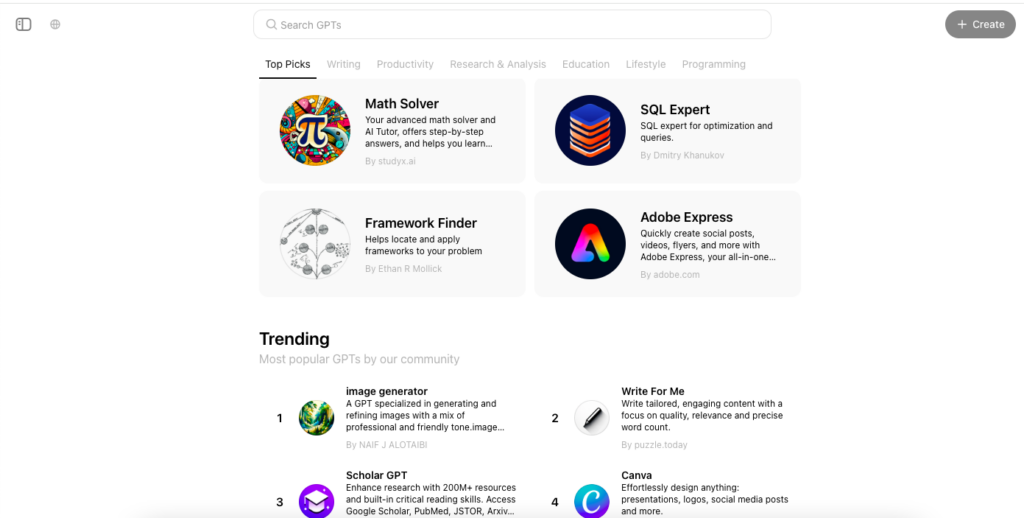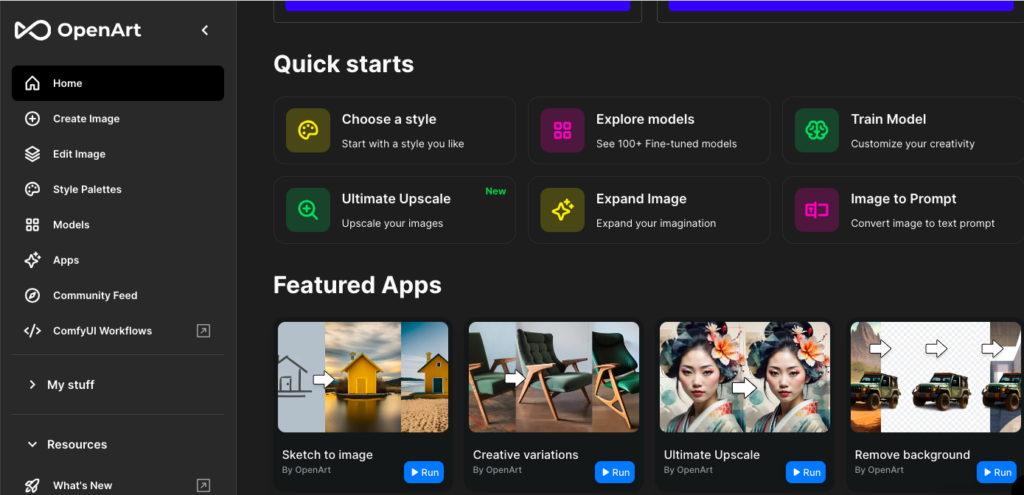Generative AI, a cornerstone of contemporary technology, transcends traditional constraints by emulating human cognitive processes to generate content and foster innovation.
But what precisely constitutes generative AI? At its essence, it embodies a class of AI models adept at discerning intricate data patterns and characteristics across diverse domains. These models empower machines to engage in creative pursuits previously reserved for human intellect, from crafting textual narratives, images, and videos to tailoring bespoke content. This transformative technology spans an array of domains, including text, image, and video generation, as well as applications in audio, chatbots, and search functionalities.
Venturing into the Realm of Generative AI: Unleashing Creativity in the Digital Age
In the vast landscape of artificial intelligence lies a frontier that ignites the imagination of researchers and enthusiasts alike: Generative AI. It’s a realm where machines not only learn from data but also craft novel content, spanning images, text, music, and even virtual environments. Today, let’s embark on an exhilarating journey through this captivating domain, unveiling the latest breakthroughs propelling the boundaries of possibility.

Diving into the World of Generative AI
Generative AI embodies the essence of machine creativity, harnessing methodologies like neural networks, reinforcement learning, and deep learning to empower machines to autonomously produce content. At its core, it’s about imbuing machines with the ability to discern patterns and rules from data, allowing them to create original content with finesse and flair.
Exploring Pioneering Advances
1. GPT (Generative Pre-trained Transformer) Models:
“The development of language is part of the development of the personality, for words are the natural means of expressing thoughts and establishing understanding between people,” said Maria Montessori. GPT models, led by OpenAI, exemplify this by excelling in natural language processing tasks. Trained on copious textual data, these models generate human-like text prompted by input. The latest iterations, notably GPT-3, showcase unparalleled proficiency in contextual comprehension and generation.
2. StyleGAN and Image Synthesis:
Pablo Picasso once stated, “Art is the lie that enables us to realise the truth.” StyleGAN and its iterations have revolutionised image synthesis, enabling the creation of high-fidelity, realistic images of faces, fauna, and landscapes. Recent iterations not only elevate visual fidelity but also grant users nuanced control over specific attributes, underscoring their versatility and realism.
3. MuseNet and Harmonic Expression:
“Music expresses that which cannot be said and on which it is impossible to be silent,” observed Victor Hugo. MuseNet, a brainchild of OpenAI, stands as a testament to generative AI’s prowess in music composition. It unfolds a symphony of possibilities across diverse genres and styles, mirroring the works of various composers or amalgamating multiple styles into harmonious compositions. Ongoing advancements prioritise enhancing coherence and structural integrity within generated musical pieces.
4. DALL·E and Multimodal Synthesis:
Leo Tolstoy remarked, “Art is not a handicraft, it is the transmission of feelings the artist has experienced.” DALL·E, an innovation by OpenAI, ventures into the realm of multimodal content generation by seamlessly fabricating images from textual prompts. It signifies generative AI’s potential in integrating diverse media types based on textual input, promising applications in content creation, design, and narrative construction.

5. AlphaFold and Protein Folding:
Stephen Hawking said, “Science is not only a disciple of reason but, also, one of romance and passion.” AlphaFold, developed by DeepMind, has achieved groundbreaking success in predicting protein structures with high accuracy. This advancement addresses one of biology’s greatest challenges, offering profound implications for understanding diseases and developing new medicines. The latest version, AlphaFold 2, delivers even more precise predictions, revolutionising the field of bioinformatics.
6. AlphaStar and Strategic Gaming:
“Play is the highest form of research,” noted Albert Einstein. AlphaStar, also a creation of DeepMind, represents a significant leap in AI’s ability to perform complex strategic tasks. Excelling in the real-time strategy game StarCraft II, AlphaStar demonstrates sophisticated decision-making and adaptive learning capabilities. This technology showcases AI’s potential in scenarios requiring long-term planning and strategic thinking.
7. WaveNet and Speech Synthesis:
Ralph Waldo Emerson stated, “Speech is power: speech is to persuade, to convert, to compel.” WaveNet, developed by DeepMind, advances the field of speech synthesis by generating natural-sounding human speech from text. Utilising neural networks, WaveNet surpasses traditional text-to-speech systems in realism and fluidity. The latest enhancements continue to refine the model’s ability to produce diverse and high-quality voice outputs.
8. Perceiver and Multimodal Understanding:
Carly Fiorina observed, “The goal is to turn data into information, and information into insight.” DeepMind’s Perceiver model pushes the boundaries of multimodal data processing by handling various types of input data such as images, text, and audio with a unified architecture. This flexibility allows Perceiver to excel in tasks that require integrating information from multiple modalities, opening new avenues for applications in AI-driven
analysis and synthesis.
9. Gato and Generalist AI:
Albert Einstein famously said, “Imagination is more important than knowledge.” Gato, another innovative model from DeepMind, exemplifies the strides towards generalist AI. Capable of performing a wide array of tasks from different domains, Gato demonstrates versatility by adapting to various inputs and contexts. Its development marks a significant step towards achieving more generalised and adaptable AI systems.
10. Gemini and Enhanced Productivity:
Malcolm X asserted, “The future belongs to those who prepare for it today.” Google DeepMind’s Gemini model is at the forefront of enhancing productivity tools within the Google ecosystem. By integrating advanced AI capabilities into Google Workspace, Gemini helps streamline workflows, improve collaboration, and provide intelligent assistance for tasks such as writing, reading, and managing information. Continuous updates ensure that these tools evolve to meet the ever-changing needs of users.
Implications and Future Trajectories
The strides in generative AI beckon transformative implications across myriad domains, from the arts to education, healthcare, and beyond. Yet, they also raise profound questions regarding ethics, authenticity, and the sanctity of creativity. As generative AI evolves, distinguishing between human and machine-generated content becomes increasingly nuanced, prompting reflections on issues like intellectual property rights and the proliferation of misinformation.
Looking ahead, the trajectory of generative AI entails continual refinement of existing models, exploration of novel modalities for content synthesis, and synergistic integration with allied AI disciplines such as reinforcement learning and unsupervised learning. Furthermore, research endeavours must be coupled with ethical considerations to ensure that the promises of generative AI are actualized conscientiously and equitably.
Concluding Remarks
Generative AI represents a paradigmatic shift in our conception of artificial intelligence, transcending data analysis to embrace creative expression. The contemporary advancements in this realm epitomise the remarkable strides made in enabling machines to engender content once deemed the prerogative of human ingenuity. As we navigate the frontiers of generative AI, it behoves us to approach its evolution and application with discernment, mindful of the ethical imperatives and societal ramifications, thereby fostering its enrichment of the human experience.



